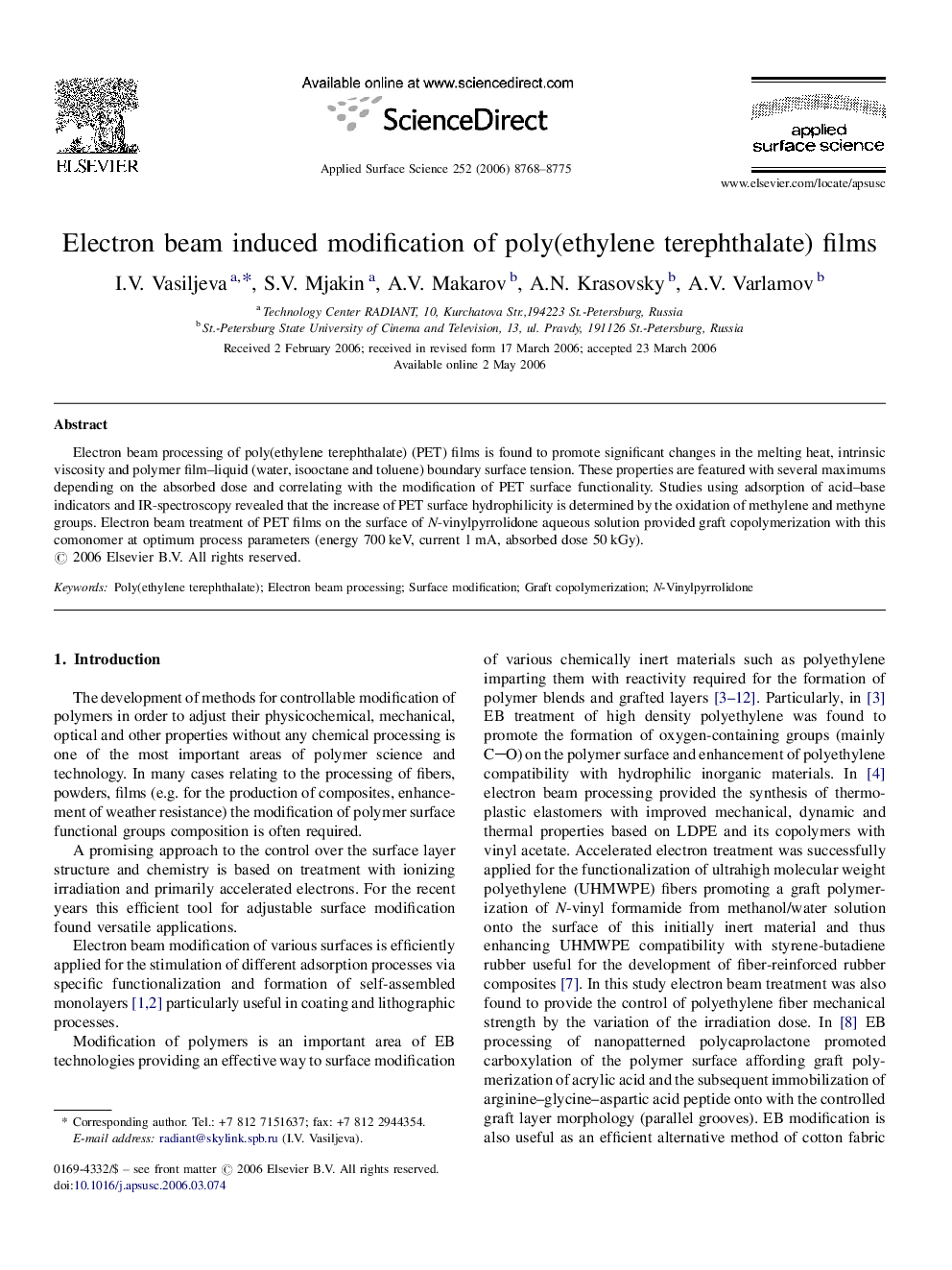| Article ID | Journal | Published Year | Pages | File Type |
|---|---|---|---|---|
| 5368727 | Applied Surface Science | 2006 | 8 Pages |
Electron beam processing of poly(ethylene terephthalate) (PET) films is found to promote significant changes in the melting heat, intrinsic viscosity and polymer film-liquid (water, isooctane and toluene) boundary surface tension. These properties are featured with several maximums depending on the absorbed dose and correlating with the modification of PET surface functionality. Studies using adsorption of acid-base indicators and IR-spectroscopy revealed that the increase of PET surface hydrophilicity is determined by the oxidation of methylene and methyne groups. Electron beam treatment of PET films on the surface of N-vinylpyrrolidone aqueous solution provided graft copolymerization with this comonomer at optimum process parameters (energy 700Â keV, current 1Â mA, absorbed dose 50Â kGy).
